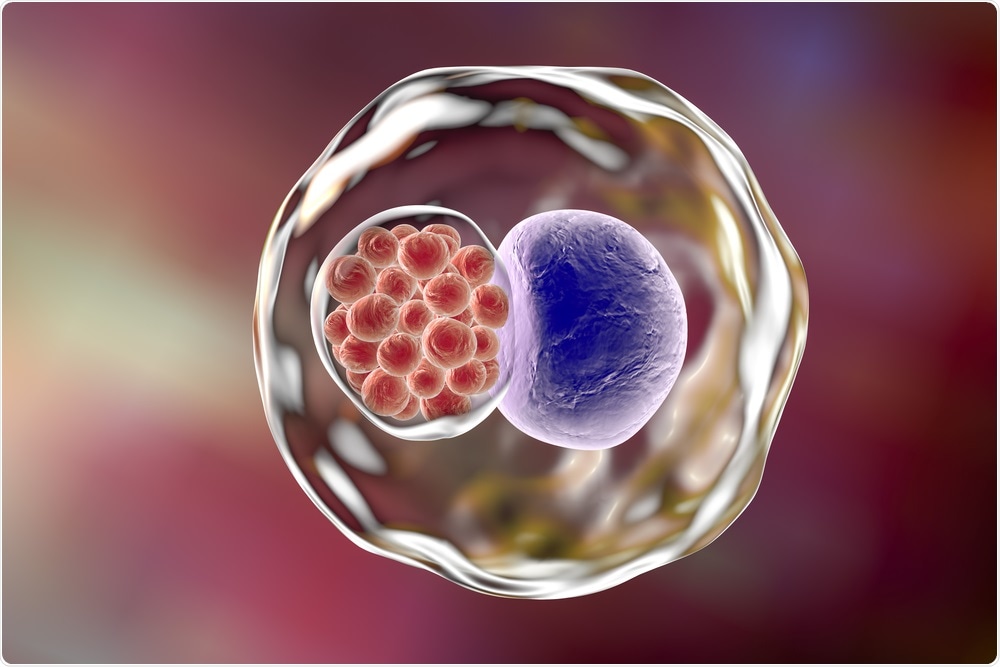Researchers at Harvard University are one step closer to understanding how the Chlamydia trachomatis bacterium uses the molecular machinery of host cells for invasion. The team employed fluorescence-activated cell sorting (FACS)-based CRISPR screening for the identification of three major candidate genes known to facilitate pathogenic invasion.
 Kateryna Kon | Shutterstock
Kateryna Kon | Shutterstock
The obligate bacterium, Chlamydia trachomatis, is an insidious microorganism that causes the sexually-transmitted disease, Chlamydia, in humans.
Infections are progressive, with undiagnosed patients having an increased risk of blindness, pelvic inflammatory disease and infertility. As such, a developed understanding of the molecular events that support C. trachomatis pathogenesis – particularly the infection-permissive factors endemic to the human host – presents a novel avenue for the development of therapeutics.
The research builds on existing studies that have focused on candidate host factor identification through the employ of one genetic tool, RNAi, in genome-wide screens in human cells. These screens based on loss-of-function, in which the genes encoding factors are reduced or eliminated.
The advent of CRISPR/Cas9 editing technology has since provided a new and improved method of conducting genome-wide loss-of-function screens.
The results were unexpected
Park and colleagues corroborated previous research which demonstrates that over 50% of candidate genes are those implicated in heparan sulfate synthesis, demonstrating the role of heparan sulfate in C. trachomatis attachment to the host cells.
The team further describe the role of an unsuspected candidate; COPI – a protein complex that is described below. Previous research has failed to demonstrate a role for COPI in pathogenesis.
The research team from the Waldor Lab at Harvard University used a fluorescence-activated cell sorting (FACS)-based CRISPR screen of human cells to identify the host proteins that enable the invasion process of the intracellular bacterium C. trachomatis.
The team infected a loss-of-function pool of Cas9 cells with a C. trachomatis expressing a fluorescent marker. Cells that were fluorescent marker negative were selected, as the bacteria invade the cells, obscuring fluorescence.
These cells are presumed to be enriched for the candidate genes as the invasion is mediated by host factors. The sgRNAs of these cells were sequenced and analysed for statistical significance, yielding seventeen possible candidate genes.
The major genes responsible for these factors were categorized into three major groups encoding:
- The biosynthetic enzymes of the cell-surface glycosaminoglycan heparan sulfate. Heparan sulfate acts as a molecular handle, posing as a receptor for the pathogen.
- Inducers of actin remodelling, which facilitate C. trachomatis invasion.
- The coatomer complex I (COPI), which aids in heparan sulfate biosynthesis and cell-surface presentation, attachment of the C. trachomatis, and translocation of its type III secretion system (T3SS) – apparatus that enables injection of effector proteins into the host cell.
The identification of COPI was noteworthy; the researchers hypothesized that the methodology employed in previous studies would have prevented the rare hypomorphic (those with mutations that cause a partial loss of gene function) COPI alleles from being identified. The use of CRISPR circumvents this, providing a means of enriching the COPI alleles.
COPI-mediated synthesis and/or surface presentation of HS is hypothesized by the researchers to occur via indirect mechanisms that act to alter the Golgi and vesicular dynamics of the cell. Thus, HS-dependent pathogens are presumed to possess a co-dependence on COPI for invasion. HS, whilst the top scoring candidate gene is not necessary for C. trachomatis infection, suggesting routes independent of this proteoglycan also exist.
The study also demonstrates the role of COPI downstream of attachment to the host cell. When researchers used golgicide A, which acutely disrupts COPI, they found that translocation of TarP, an effector protein which stimulates C. trachomatis T3SS via its actin-bundling activity, is reduced. Park et al. hypothesize that this defect in the T3SS arises from alterations in membrane lipid composition which limit its function.
Was FACS-based CRISPR screening a useful tool?
The researchers conclude that the ability of COPI to elicit multiple effects, or its pleiotropy, in the context of C. trachomatis invasion position COPI as a problematic candidate gene for therapy. This is because a concrete link to steps in the pathogen invasion process is difficult to establish. As such, the authors project the need for new protein perturbation strategies to facilitate understanding of the roles of all genes in pathogen infection.
Nonetheless, the authors have successfully demonstrated the utility of FACS-based CRISPR screening in identifying the identity and mechanistic role of host factors that contribute to pathogenic invasion. In the words of Park et al. “our findings show once again the utility of using intracellular pathogens as probes to elucidate host cell biology”.
Journal reference:
Park et al. (2019) A FACS-Based Genome-wide CRISPR Screen Reveals a Requirement for COPI in Chlamydia trachomatis Invasion. Cell https://doi.org/10.1016/j.isci.2018.12.011